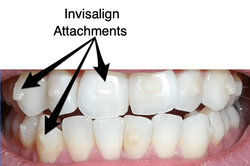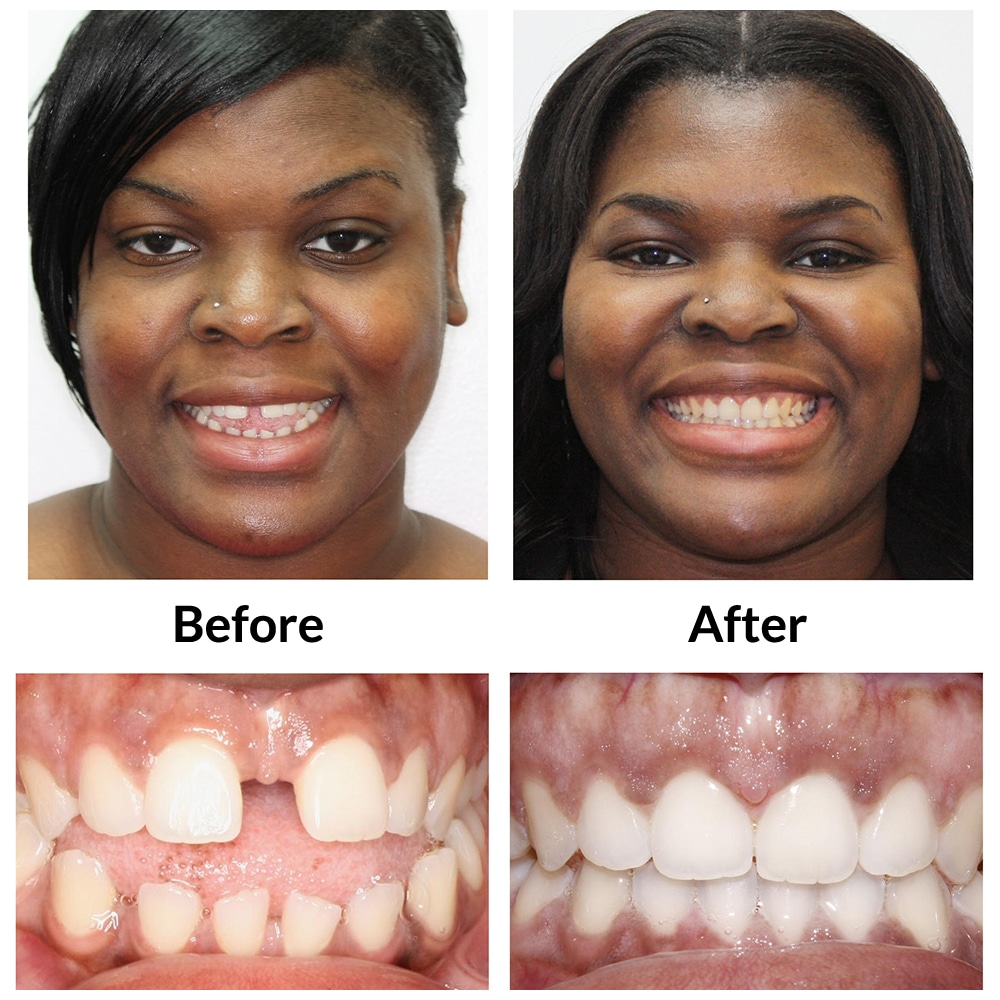The Cost of Invisalign: Recognizing the Investment in Your Smile
The Cost of Invisalign: Recognizing the Investment in Your Smile
Blog Article
Invisalign vs. Traditional Dental braces: Which Choice Is Right for You?
When thinking about orthodontic treatment, the option between Invisalign and typical braces offers several important aspects that warrant mindful assessment. Invisalign provides a very discreet option with detachable aligners, while conventional braces provide an extra visible yet reliable solution for serious imbalance. Each alternative incorporates unique benefits and disadvantages associated with aesthetic appeals, convenience, therapy period, and expense. Recognizing these nuances is vital for making an informed choice that straightens with your individual preferences and lifestyle. The question stays: which alternative will ideal meet your orthodontic requirements and assumptions?
Review of Treatment Options

In comparison, traditional dental braces include steel brackets and cords that are bonded to the teeth. This technique uses continuous pressure over time to achieve placement. While efficient for complicated orthodontic concerns, standard dental braces call for normal visits for changes and can present challenges in keeping dental health as a result of the problem of cleaning up about brackets and cables.
Both alternatives have their merits, and the choice typically rests on details dental problems, way of living preferences, and individual compliance. Ultimately, speaking with an orthodontic professional is important for identifying the most suitable treatment strategy tailored to specific demands. Recognizing the subtleties of each alternative can substantially affect the total success of orthodontic therapy.
Visual Factors To Consider
A substantial aspect influencing the option between Invisalign and traditional dental braces is the aesthetic charm each treatment provides. Invisalign aligners are crafted from clear plastic, making them essentially unseen when put on. This discreet appearance is particularly attracting grownups and teens who may really feel uncomfortable about their orthodontic treatment. The capacity to maintain an all-natural smile throughout the positioning procedure can considerably improve the client's confidence in social and expert settings.
In comparison, conventional braces include metal braces and cords, which can be more obvious. While improvements in orthodontic technology have actually brought about the growth of smaller sized braces and colored elastics, standard braces still preserve a more obvious account. For some individuals, the presence of dental braces might hinder them from looking for required therapy.
Ultimately, the option in between Invisalign and standard braces may pivot on individual choices concerning aesthetics. Clients who prioritize discernment frequently lean towards Invisalign, while those who are much less concerned regarding exposure might select typical braces. Comprehending the visual effects of each choice is vital for making an informed decision that aligns with one's way of life and preferences.
Comfort and Convenience

In regards to ease, Invisalign aligners are removable, enabling patients to appreciate their favored foods without constraint and maintain optimum oral health. Brushing and flossing are streamlined, as the aligners can be secured throughout these routines, whereas standard braces require careful navigating around braces and wires.
In contrast, standard braces demand normal adjustments, making them much less hassle-free for those with active routines. Generally, the convenience and benefit of Invisalign make it an appealing option for many individuals looking for orthodontic therapy.
Therapy Period and Performance
While both Invisalign and typical braces are efficient in correcting oral misalignments, the duration of treatment can vary substantially in between both options. Commonly, Invisalign treatment can take anywhere from 12 to image source 18 months, relying on the complexity of the case. The clear aligners work by gradually moving teeth right into their wanted positions, and regular follow-ups with an orthodontist assistance guarantee progression remains on course.
On the other hand, traditional braces frequently require a longer commitment, generally varying from 18 months to 3 years. This is due to their fixed nature and using wires and brackets, which can be a lot more effective for complex instances and serious misalignments (Invisalign). The therapy efficiency of standard dental braces is well-documented, as they enable specific changes and better control over tooth motion
Eventually, the option in between Invisalign and traditional dental braces may depend upon both the expected treatment period and the details oral concerns available. Consulting with an orthodontist is important, as they can offer customized suggestions based on individual demands, making sure the picked method lines up with wanted timeframes and end results.
Price Comparison and Insurance Choices
Cost plays a significant duty in the decision-making procedure for individuals thinking about orthodontic therapy, whether choosing Invisalign or typical braces. Generally, the cost of Invisalign varieties from $3,000 over here to $8,000, while traditional dental braces typically cost between $2,000 and $6,000. Aspects influencing these expenses consist of the intricacy of the instance, the period of therapy, and geographical location.
Many dental insurance coverage strategies provide partial coverage for orthodontic therapies, however the specifics can vary extensively. Normally, standard braces might be more regularly covered by insurance coverage strategies contrasted to Invisalign, which some insurance firms classify as an aesthetic treatment.
In addition, a number of orthodontic techniques supply flexible settlement plans, making both treatment options much more accessible. Patients ought to ask regarding potential financing options and discount rates for ahead of time repayments. Reviewing the total expense, including insurance coverage benefits and payment strategies, is necessary for making an informed choice that aligns with both aesthetic preferences and my company budget plan considerations.

Conclusion
In recap, the choice in between Invisalign and typical dental braces depends upon several variables, consisting of aesthetic preferences, comfort, treatment duration, and price. Invisalign uses a discreet, detachable alternative that assists in oral health and dietary versatility, while standard braces might be preferable for complicated dental concerns and typically come at a reduced cost factor. Eventually, assessment with an orthodontist is important to assess private conditions and determine the most proper therapy choice for achieving optimum oral placement.
When taking into consideration orthodontic therapy, the option between Invisalign and traditional braces presents several important variables that warrant mindful examination.Comparing Invisalign and traditional dental braces reveals distinct therapy choices for orthodontic correction.While both Invisalign and traditional braces are effective in remedying dental imbalances, the period of therapy can differ substantially in between the two choices.Expense plays a substantial role in the decision-making process for individuals thinking about orthodontic therapy, whether deciding for Invisalign or standard dental braces.In recap, the option in between Invisalign and typical braces hinges on numerous variables, including visual preferences, convenience, therapy duration, and price.
Report this page